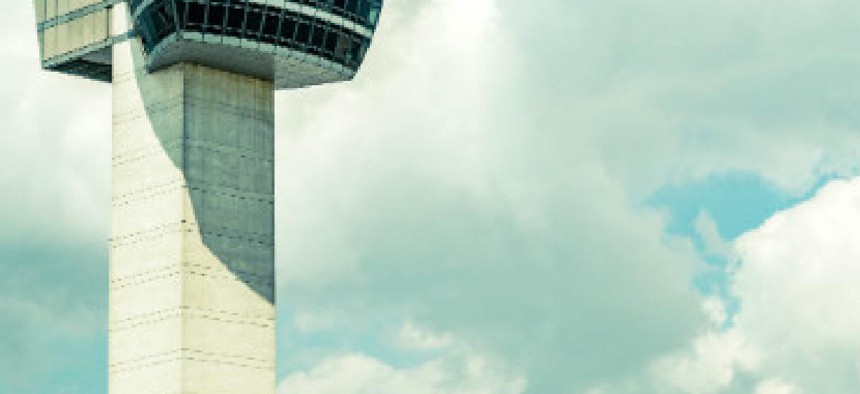FAA looks to spur spectrum sharing tech

The FAA is leading a multi-agency effort to encourage commercial innovation in spectrum sharing.

The control tower at New York's Kennedy Airport. (Photo credit: Valerii Iavtushenko / Shutterstock.com)
Four agencies are banking on industry coming up with an innovative way to free up spectrum by combining surveillance, air safety and weather radar applications into a single "system of systems" by 2024.
The federally owned spectrum between 1300 and 1350 MHz is "prime real estate" that offers the telecommunications and other commercial industries spectrum that can sustain wireless transmission over long ranges, said Rebecca Guy, the Federal Aviation Administration's program manager for the new spectrum relocation plan.
Multiple agencies are participating in an FAA-led bid to combine spectrum-dependent air surveillance, safety and weather operations under a plan dubbed the Spectrum Efficient National Surveillance Radar Program, or SENSR. The plan seeks to free up federal spectrum for commercial auction by 2024 and relocate federal users shortly afterwards. The FAA issued a request for information on the plan in December and has held an industry day with tech providers to get input, Guy said.
The plan would consolidate legacy surveillance radars, including aircraft surveillance, air traffic and weather radars, operated by the Department of Defense, Customs and Border Protection and the National Oceanic and Atmospheric Administration under one system, Guy said in a Jan. 5 press briefing on the project.
The spectrum that DoD, DHS, FAA and NOAA radar systems occupy is potentially worth as much as $19 billion under auction in a couple of decades, according to Guy.
The agencies want to dip into the spectrum relocation fund to pay for the program to develop the new radar capabilities, as well as tap the proceeds of the 2024 spectrum auction to move agency applications over to the new system in the future.
The team is looking to industry to combine their systems, some of which are based on 1970's radar technologies, with emerging technologies that can better combine applications, said Guy.
'The SENSR team is already taking stock of some of the technologies that might fill the bill and hoping for industry to fill in some of the blanks. Multi-function Phased Array Radar could offer solution, as could other technology under development, according to Guy, as long as it meets government standards. To hit the 2024 deadline, Guy said, interested industry partners probably would need to have a candidate technology already under development.
"Building something from scratch won't meet the deadline," she said. "We're trying to assess technologies that industry will bring to us."





